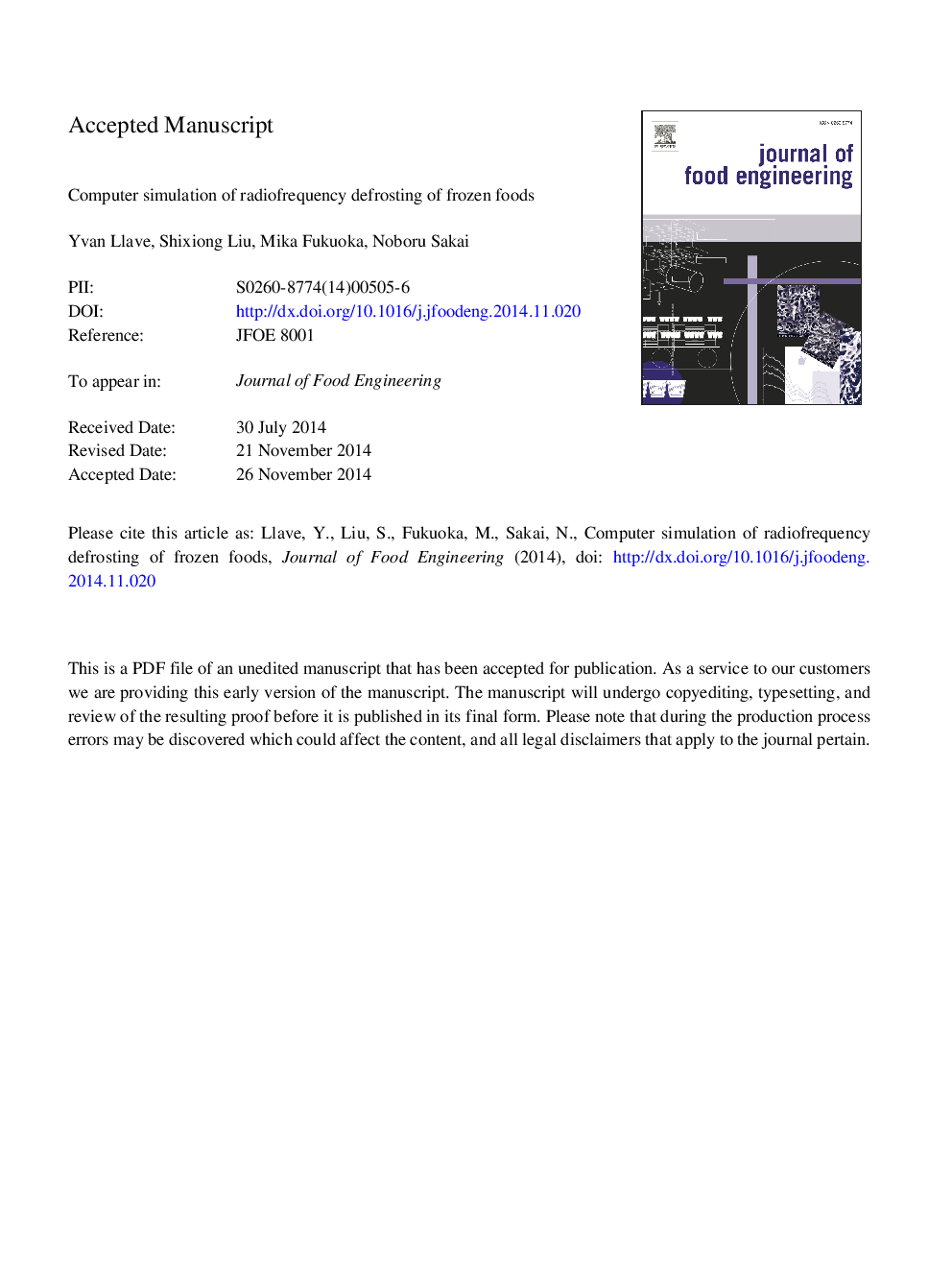| Article ID | Journal | Published Year | Pages | File Type |
|---|---|---|---|---|
| 6665540 | Journal of Food Engineering | 2015 | 54 Pages |
Abstract
The radiofrequency (RF) defrosting of tuna (Thunnus maccoyii) was investigated experimentally and by mathematical modeling using an innovative three-dimensional (3D) defrosting model. To test the simulated results, we thawed samples from â60 °C to â3 °C (center temperature) using a 13.56-MHz parallel-plate RF system and by thawing in air. The center and circumference temperatures were measured by optical fiber sensors. The model was developed using three finite element programs, or one each for heat transfer, electromagnetic field analysis and 3D model construction. The model takes into account the temperature dependence of the physical and dielectric properties, allows for a change of state by including the apparent specific heat in the calculations, and considers the contribution of conductive and free convective heat transfer. Finally, it was confirmed that the heating was more uniform when the electrode was similar in size to the sample, based on the simulated electric field strength and temperature distributions.
Related Topics
Physical Sciences and Engineering
Chemical Engineering
Chemical Engineering (General)
Authors
Yvan Llave, Shixiong Liu, Mika Fukuoka, Noboru Sakai,
